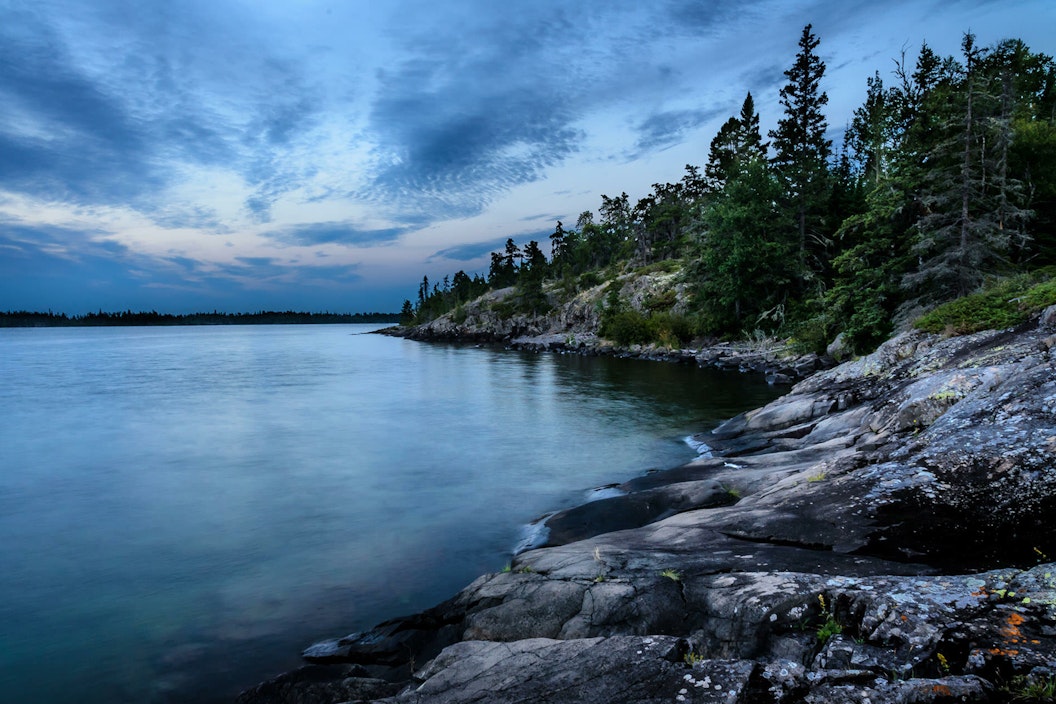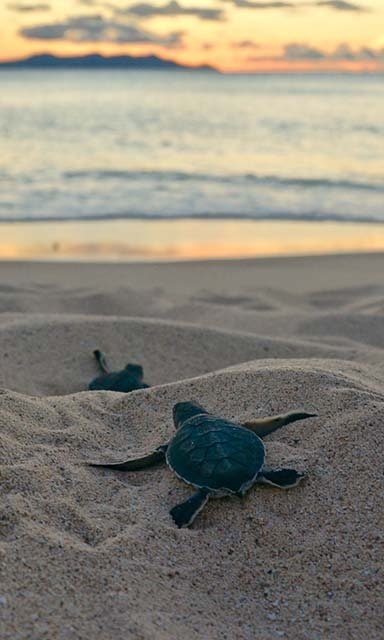
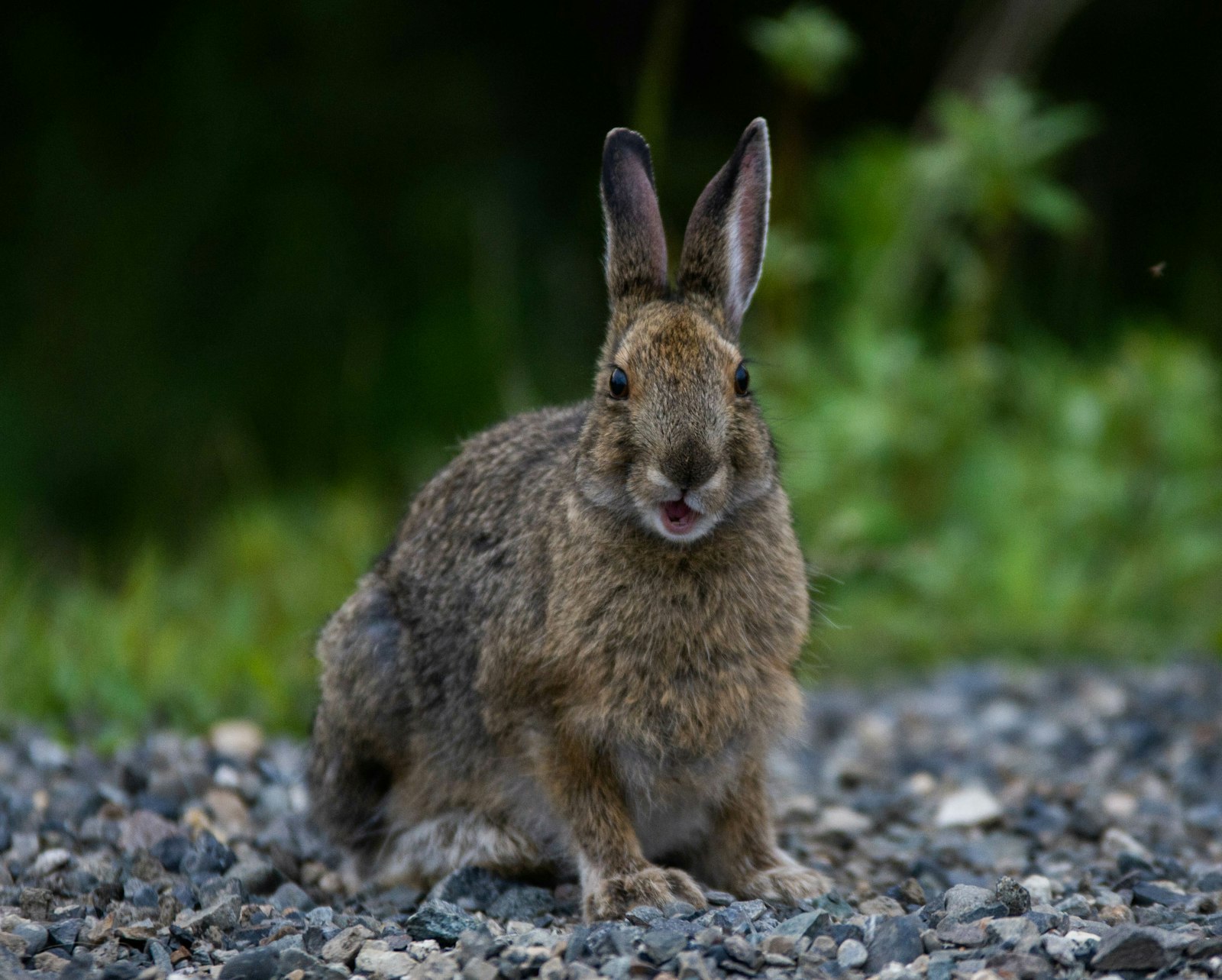
.
.
Michigan’s Isle Royale National Park is a unique location for wildlife and ecosystem research. Situated in Lake Superior, 99% of the 210-square mile island is undeveloped, designated wilderness and the perfect setting for a natural laboratory. As a remote island ecosystem, the park’s more than 17 mammal species are all closely confined to the same habitat areas, resulting in some interesting dynamics. For example, it is home to the longest running predator-prey study on record, resulting in a broad understanding of wolf-moose interactions at the park.
But little is known about some of the other mammals that inhabit Isle Royale. A new study in the park, supported by the National Park Foundation, focuses on understanding a central figure in this ecosystem: the snowshoe hare (Lepus americanus) - by studying its behavior, predator-prey dynamics, and vulnerability to climate change.
Return of the Wolves: A Ripple Effect
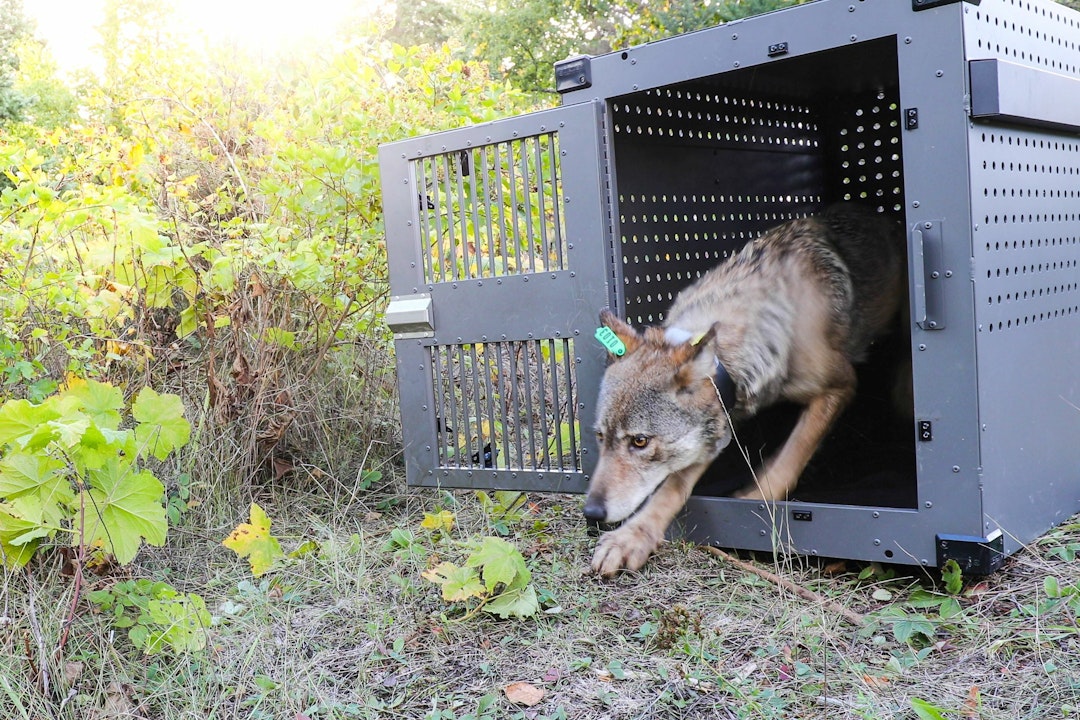
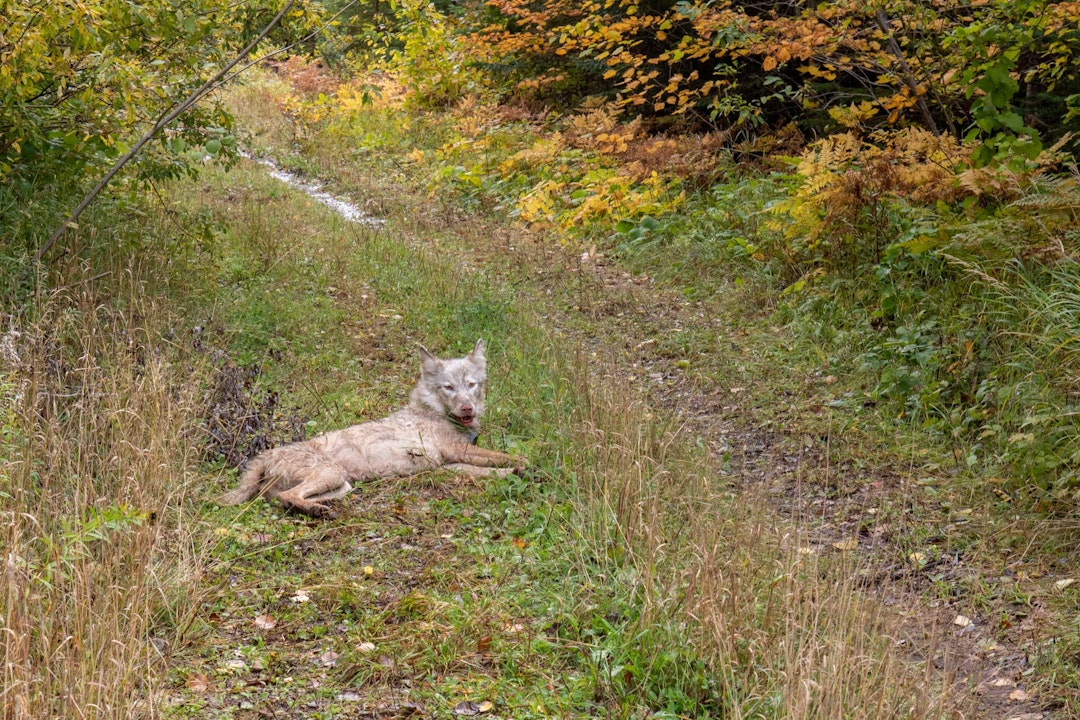
In 2018, Isle Royale reintroduced wolves to the island after seeing a decline in wolf abundance, and there is much to learn about what the return of wolves means for other mesocarnivores – animals whose diet consists of 50-70% meat – and prey species on the island. Snowshoe hare are an important prey of numerous predator species, including the red fox (Vulpes vulpes).
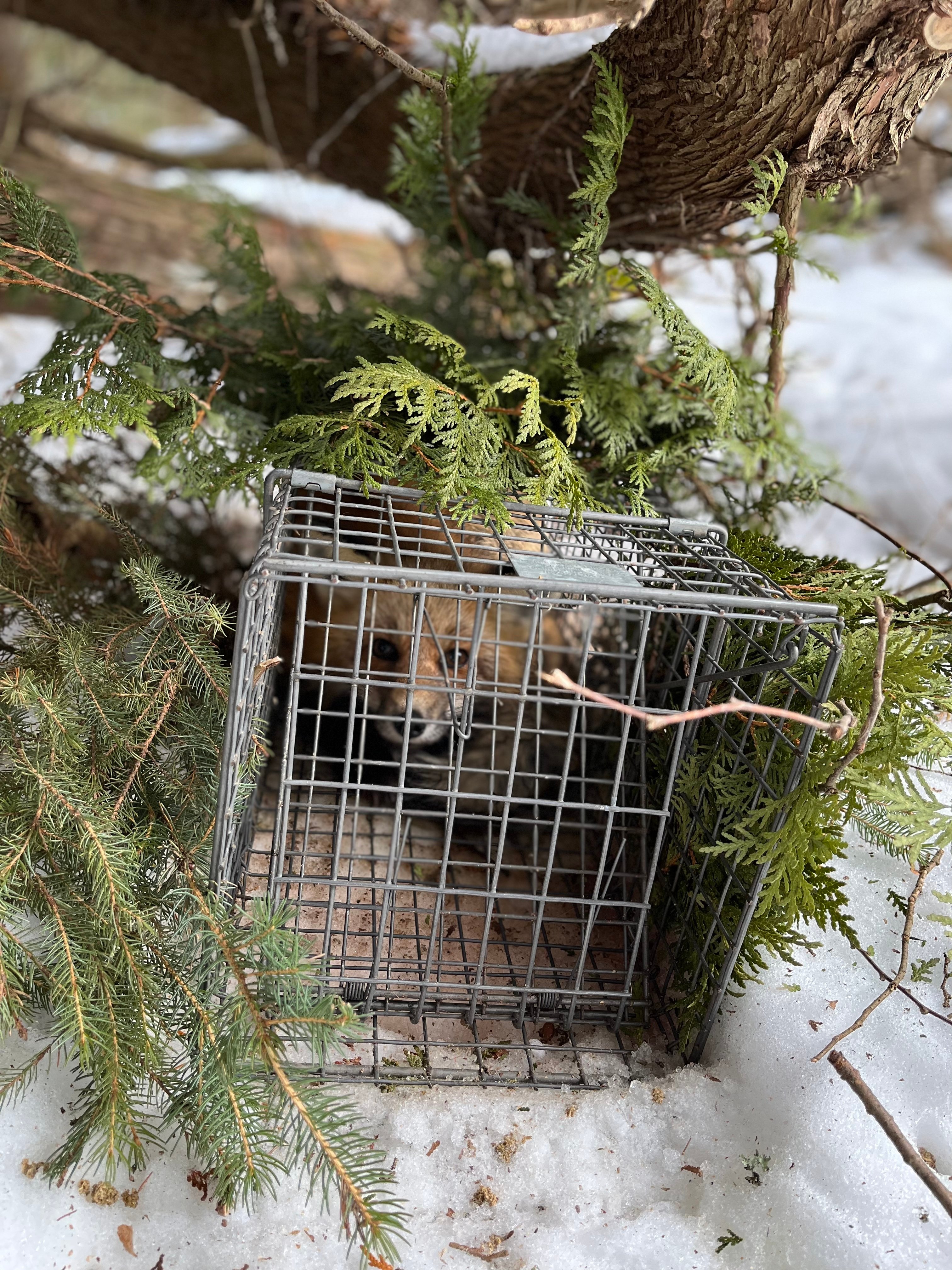
Existing studies on Isle Royale red foxes are demonstrating that the reintroduction of wolves to the park changes the behavior of competing carnivores. For example, when wolves are present, foxes disperse to other parts of the island to avoid wolf conflicts over carrion, which will prove deadly for the fox. Despite being displaced in some areas by wolves, overall fox populations are stable, suggesting that the main drivers of their population are more tied to the overall abundance of their prey base, which consists mainly of snowshoe hare.
Martens, another mesocarnivore on the island, do not compete directly with wolves, but they do compete with foxes; therefore, wolf presence that pushes foxes away into other areas appears to benefit the marten populations – changing the overall carnivore community structure across the island.
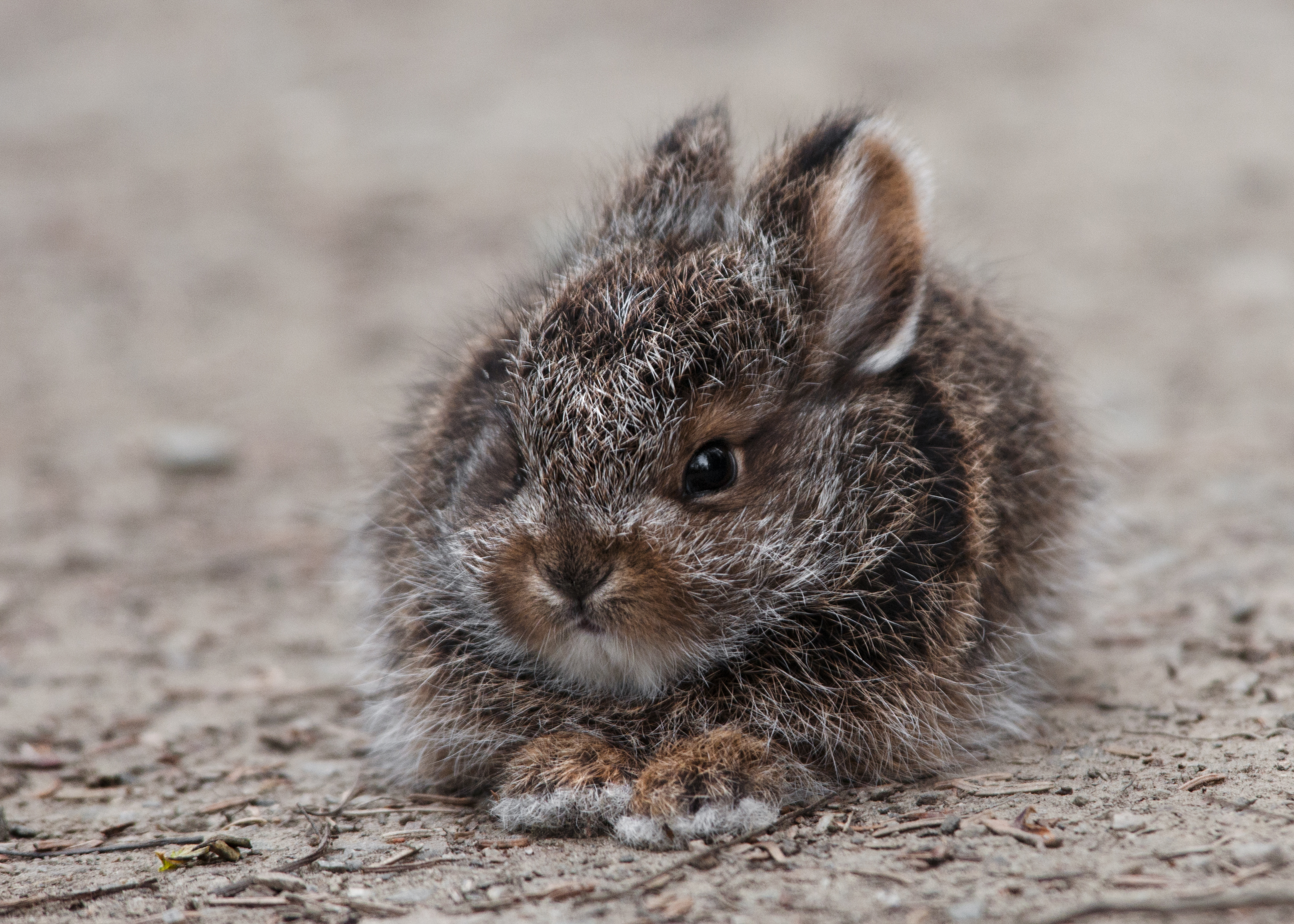
Wolves help to balance the island ecosystem, preferring moose and beaver as their primary food source. In the herbivore community, moose, beaver, and snowshoe hare all compete for limited vegetation. But with warming winters, the snowshoe hare face additional threats that could spell trouble for the long term.
To effectively manage wildlife, park scientists must understand the full effects of the reintroduction of wolves to the park and the dynamics of snowshoe hare populations, including their causes of mortality and their role as a key prey species.
Snowshoe Hares: Masters of Camouflage, but Vulnerable to Change

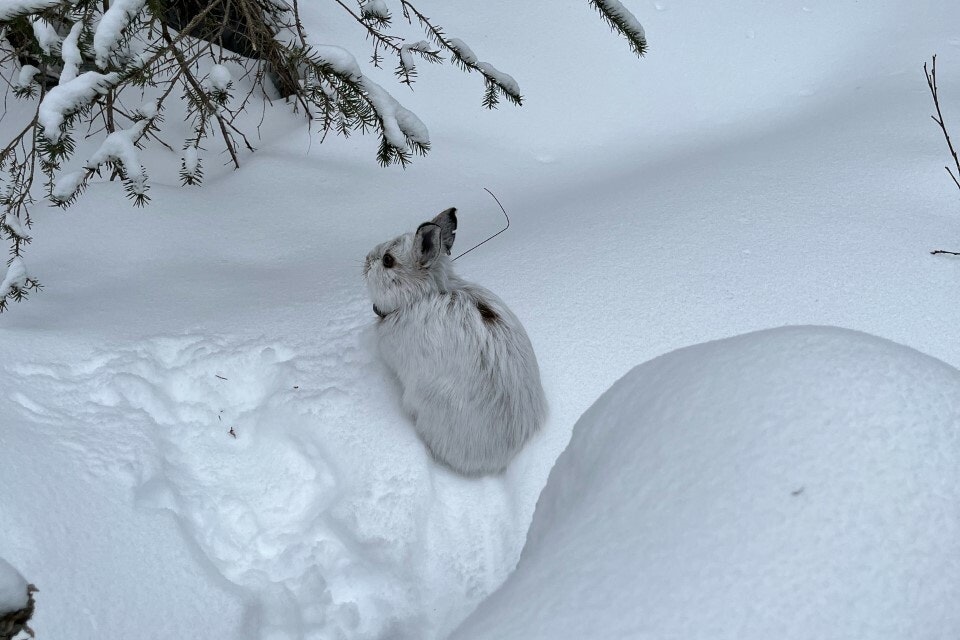
Snowshoe hares live in boreal forests and have some interesting characteristics that allow them to thrive, despite harsh winter conditions and numerous predators. They have oversized, furry hind feet that are lined with stiff hairs, acting as snowshoes and allowing the hares to move more nimbly along the surface of deep snow. One of their best predator defense mechanisms is blending in to their surroundings, often staying frozen in place when their large ears detect predators until the danger has passed. This camouflaging is especially impressive because it spans seasons, helping to keep the snowshoe hares safe year-round.
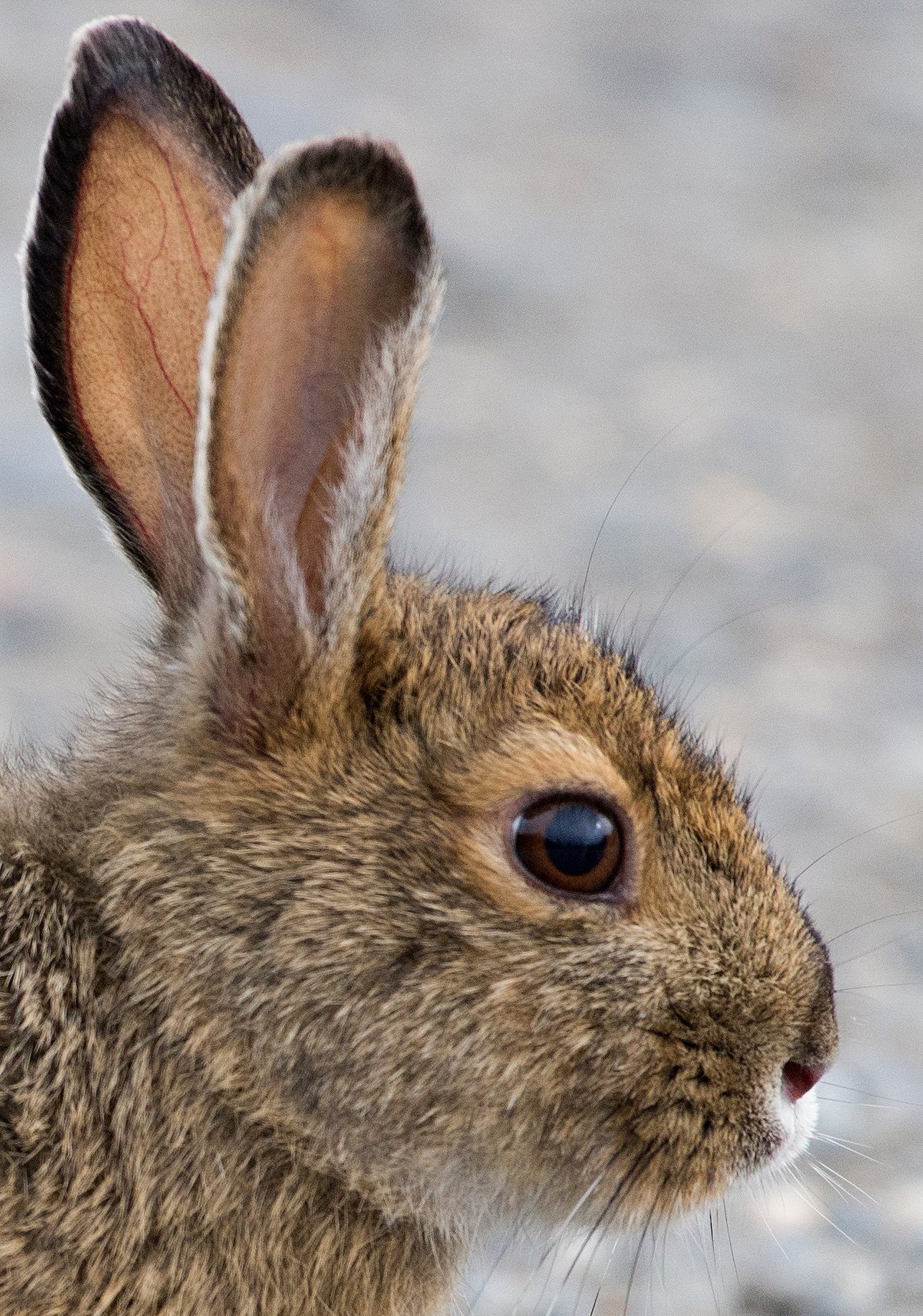
Snowshoe hare’s fur undergoes a seasonal coat color molt that has long provided them an adaptive camouflage: in the spring months their color changes from white to brown, and then in the fall transitions from brown back to white. The snowy color helps them blend into their wintery snow-filled surroundings, and the summer brown color aligns with the forest’s rocks and dirt. This transition is driven by photoperiodism – the response of a plant or animal to changes in the duration of cycles of light and dark.
With changes in the timing of snowfall in Isle Royale due to climate change, snowshoe hares can experience camouflage mismatch if the color of their fur doesn’t match their environment. This can mean increased predation rates because the hares are easier to spot by predators.
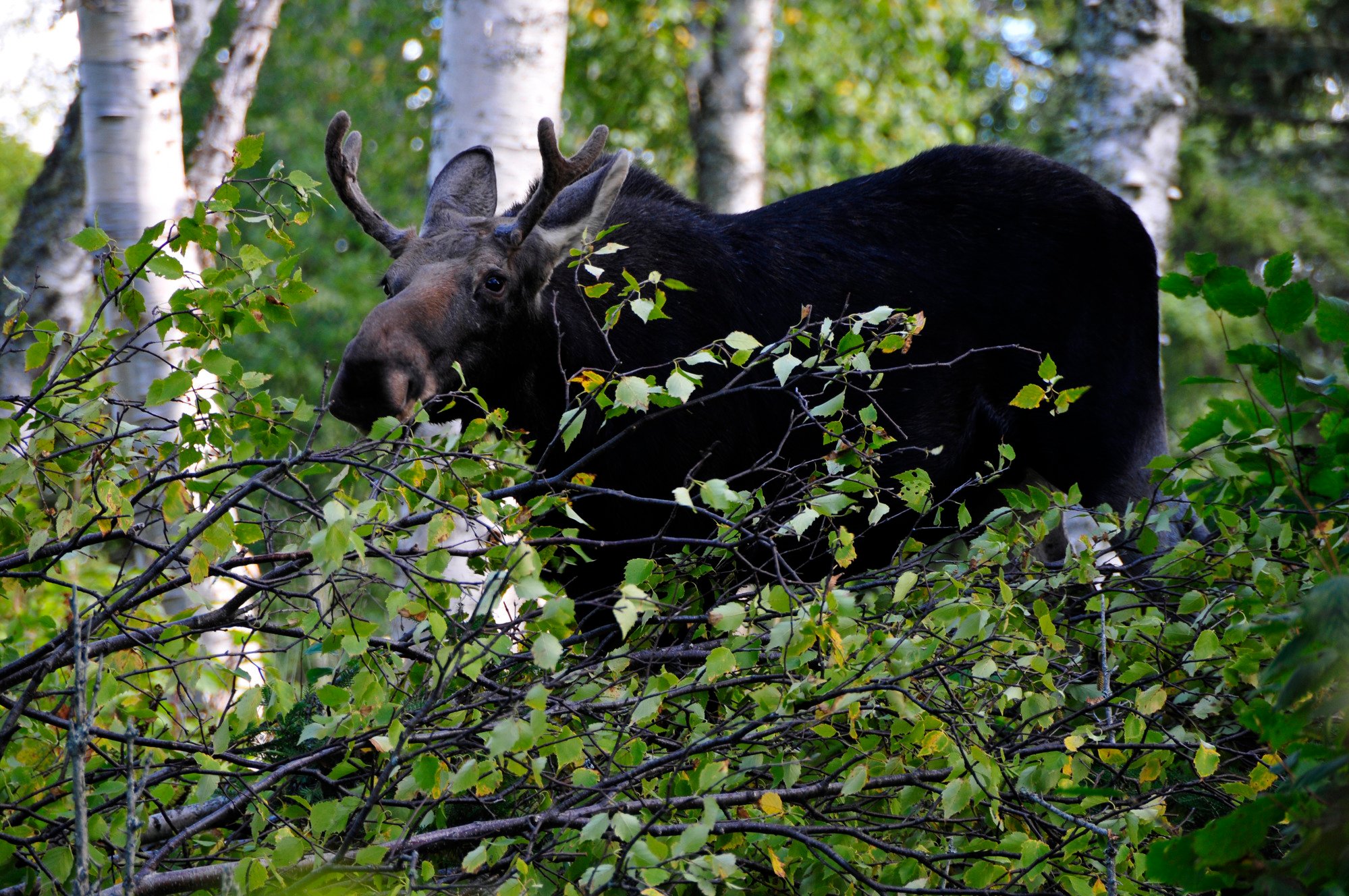
This may be compounded by the impact of decades of moose over-herbivory – or feeding on plants – in the park, as moose and snowshoe hare are direct competitors for food. Historically, moose and snowshoe hare fed on plants of differing heights, but longer snow-free seasons have resulted in de-stratified layers of plants and therefore increased the overlap of where moose and snowshoe hares may eat.
Additionally, the moose over-herbivory is changing the makeup of these plant communities, according to a long-term study site at the park, reducing the hares’ preferred habitat and forage availability. All of this is potentially contributing to a decline in snowshoe hare populations, something scientists at the park are keen to investigate.
National Park Foundation Funds Key Research
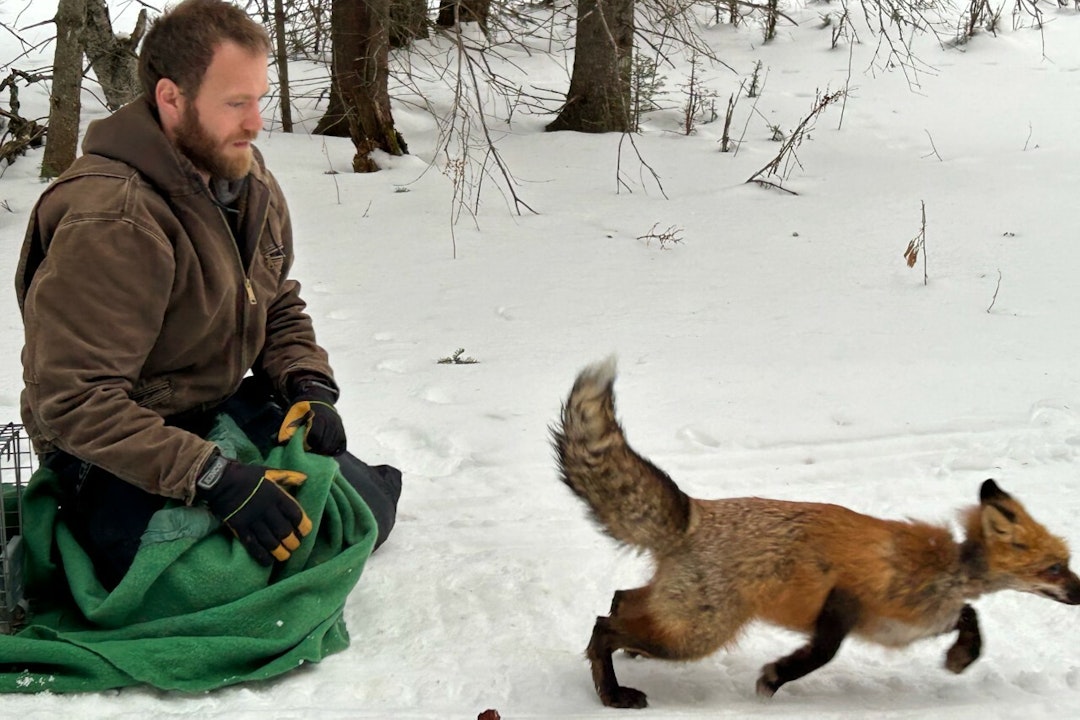
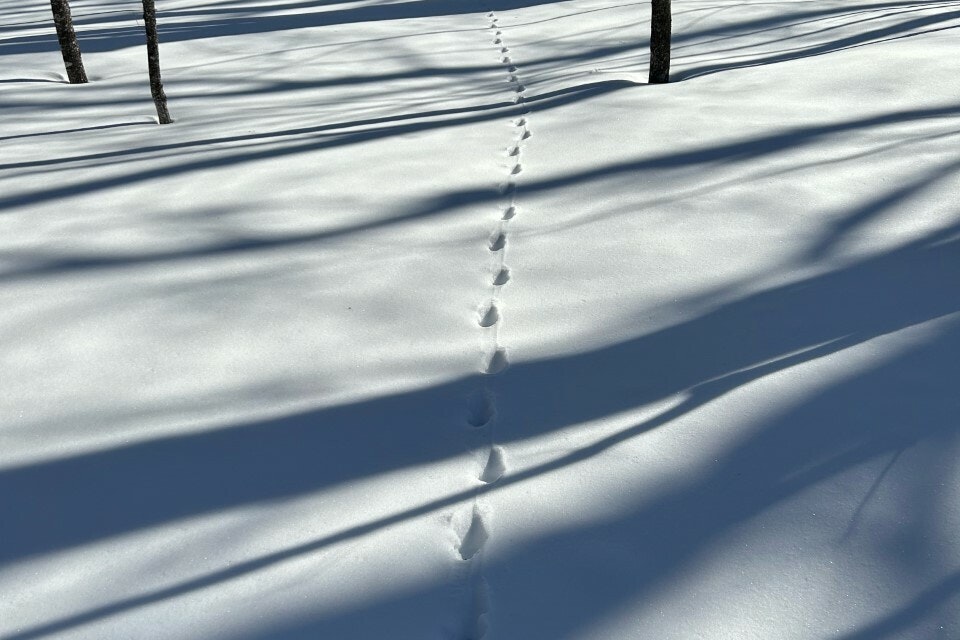
To gain understanding of snowshoe hare, scientists first have to collect data on current populations. Together with study partner University of Wisconsin – Madison’s Pauli Lab for Forest and Wildlife Ecology, park scientists are starting to collect the data needed to analyze the impacts of climate change, competition for food, and changing carnivore community dynamics.
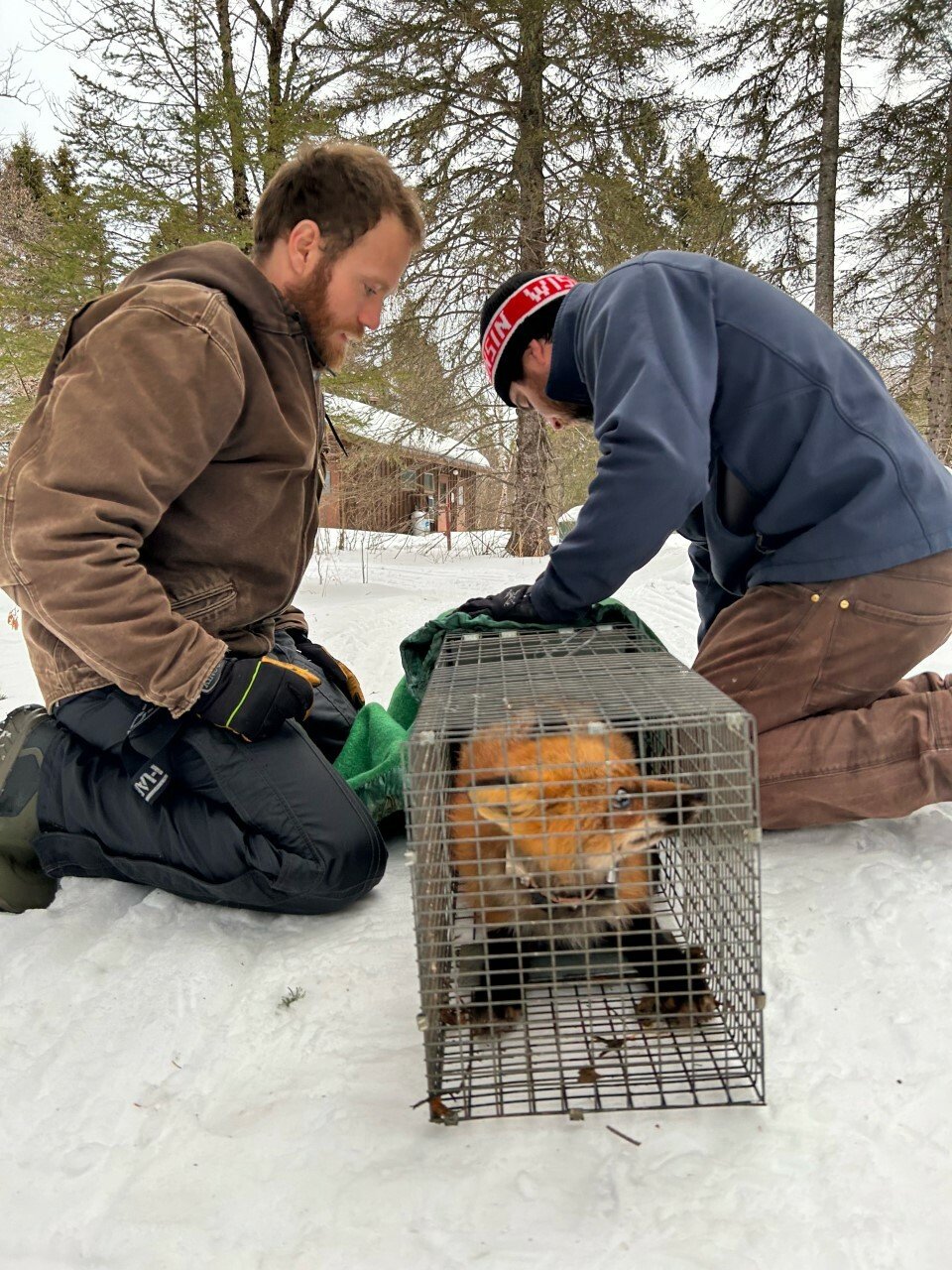
Over a period of 18 months, the park live-trapped and collared foxes and snowshoe hare to collect data on their spatial and temporal behavioral patterns and survival. Scientists also recorded data points such as weight and collected genetic, hair, tissue, scat, and urine samples to further inform their study. Newly designed population models will take into account this data, along with snow conditions, length of snow season, forest cover, moose herbivory, and red fox abundance – helping scientists to better understand and predict long term trends among snowshoe hare populations amid a changing climate and evolving island wildlife dynamics.
What's Next
When complete, the project will provide data to analyze, helping the park learn more about how the return of wolves ultimately have driven community dynamics within the park, including but not limited to the snowshoe hare. It will also provide, for the first time, estimates of the distribution, abundance, and habitat associations for snowshoe hare within the park, helping direct future management decisions for carnivore and prey communities on Isle Royale.
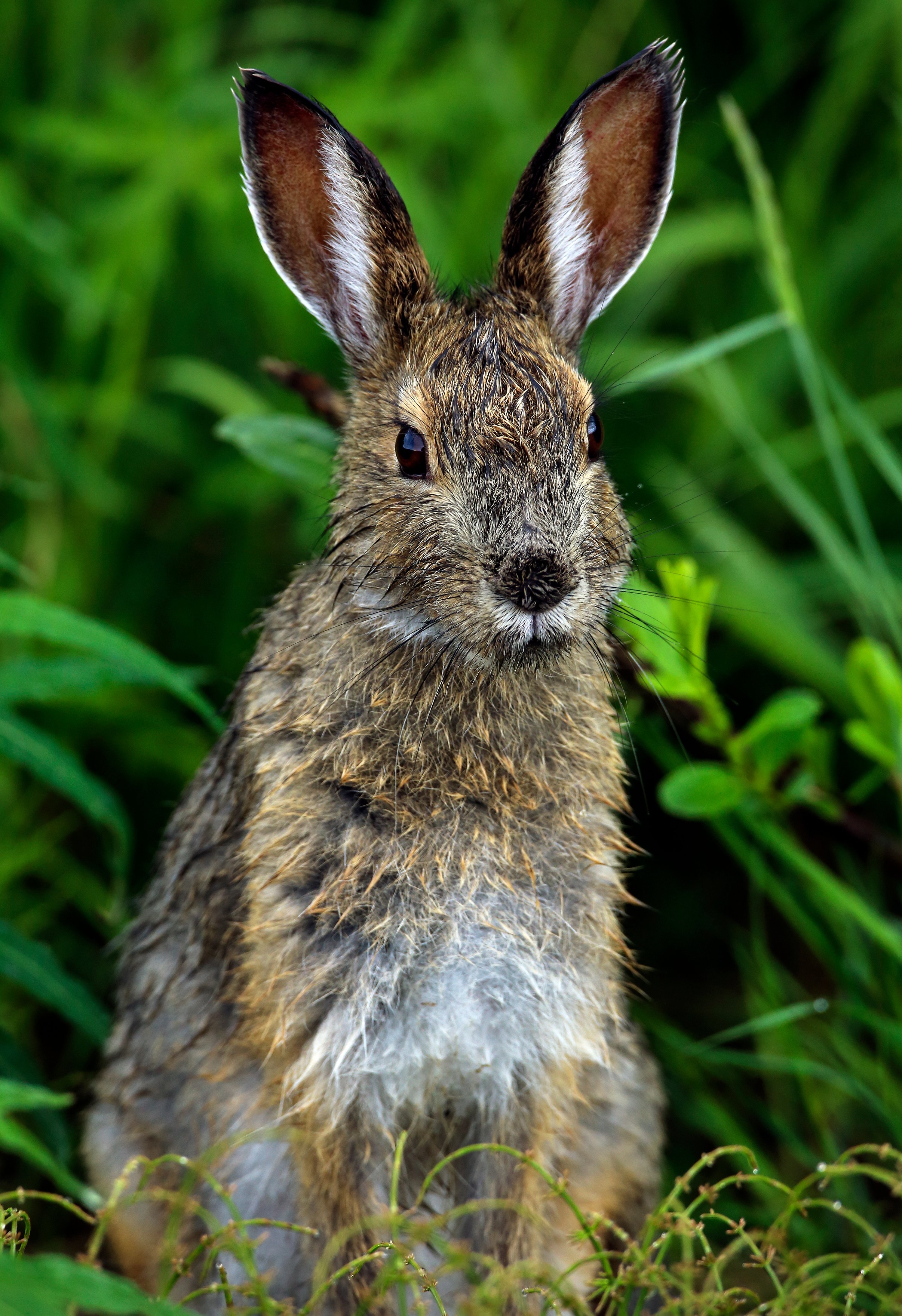
The study will provide information to help scientists determine the underlying mechanism driving the dynamics of snowshoe hare populations, thus determining how to measure the stability of the species on the island. All the data captured will be compiled into a database for the park to continue their monitoring efforts and use for future analysis, and scientists will publish their findings in full technical reports, professional presentations, and lectures at UW-Madison.
National Park Foundation donors make projects like these possible, helping park scientists to better understand and manage the remarkable wildlife and diverse ecosystems found in national parks across the country.
Want to help protect the snowshoe hare from climate change? Learn what you can do to minimize climate change impacts with these tips from NPS.
Related Programs
-
 Wildlife
Wildlife

